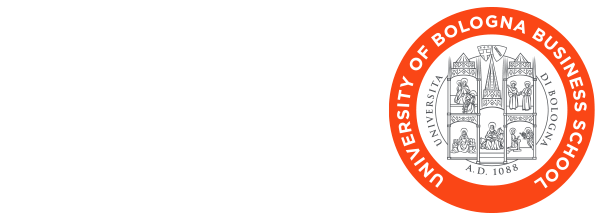
Hybrid Work and Remote Working: Organizational Models and Strategies
5 July 2025Hybrid Work as a Strategy
Remote working, also known as home working or smart working, experienced rapid growth during the global health emergency a few years ago. What was initially adopted as a temporary measure is increasingly being recognized as a strategic and permanent model for the future of work.
The hybrid model, which combines in-office presence with the possibility of working remotely, is emerging as the ideal solution for many organizations.
This is a cultural transformation more than a logistical one, and it can become a strategic advantage: companies that successfully adopt agile working experience tangible benefits, such as: increased work flexibility, higher productivity, improved talent attraction and retention and a better work-life balance for employees.
In this context, understanding how to structure an effective hybrid working model and which tools are best to use is essential for any organization that wants to compete in today’s global and digital landscape.
Comparison of Hybrid Work Models
Hybrid work is becoming an increasingly pervasive reality in international companies and modern Italian organizations. There are several models to draw inspiration from and compare.
Remote-First Model
The most radical model. Remote work is the default setting. All business processes are designed to be carried out entirely online, with in-person meetings considered exceptions.
| BENEFITS | DOWNSIDE |
| Highly flexible working conditions | Worker isolation |
| Ability to hire talent anywhere in the world | Difficulties in creating a shared corporate culture |
| Significant reduction in fixed costs (offices, utilities, transportation) | Greater challenges in communication |
Office-First Model
On the opposite end, this model places the physical office at the core of work life, allowing limited flexibility, such as one or two days per week of remote work for employees.
| BENEFITS | DOWNSIDE |
| Physical presence facilitates collaboration and corporate culture | Less attractive for talent seeking remote work |
| Increased managerial control | Potential mismatch between those working on-site and those working remotely |
| Model suitable for teams unfamiliar with autonomy | Cyber security risks |
Hybrid-Flex Model
This model offers maximum freedom, allowing employees to choose where and when to work, with technological tools that guarantee operability and communication.
| BENEFITS | DOWNSIDE |
| Highest employee satisfaction | Difficult coordination (if not supported by adequate tools) |
| High level of work-life balance | Need for strong organizational maturity |
| Employee empowerment | Cyber security risks |
Tecnologie e strumenti essenziali per il remote working
An agile or hybrid work model cannot function without a robust technological infrastructure. Digital tools are the link between distributed workers and business processes. These are essential:
- communication platforms. Crucial for synchronous and asynchronous communication, virtual meetings, chats, and document sharing. These tools help maintain team connection and support daily collaboration: Microsoft Teams, Slack, Zoom
- project management: software such as Asana, Trello, Jira, or Monday.com enables agile project management with visibility over tasks, deadlines, and responsibilities. Essential for maintaining operational efficiency
- document collaboration: Google Workspace and Microsoft 365 enable simultaneous co-creation and editing of documents, spreadsheets, and presentations, supporting an uninterrupted workflow.
- cybersecurity: one of the main challenges of hybrid work. Companies must implement systems such as VPNs, two-factor authentication, end-to-end encryption, and regular training for employees. Attention must also be paid to the right to disconnect, which, in addition to being a psychological safeguard, is a preventive measure against fatigue-related security breaches.
Corporate Culture and Remote Leadership
A strong corporate culture is the glue that holds a team together, even if geographically dispersed. However, maintaining a sense of belonging and engagement in a smart working environment can be challenging.
Some possible solutions include: creating digital rituals (weekly meetings, virtual coffee breaks); sharing company goals and successes transparently and encouraging informal communication and mutual support.
Managers must evolve toward a leadership style based on trust, autonomy, and clear communication. It’s not just about managing tasks but leading people in a new context. Best practices include:
- Setting clear and measurable goals
- Providing consistent feedback and opportunities for listening
- Using non-invasive yet transparent monitoring tools
- Promoting work-life balance
Which Jobs Can Be Done Remotely?
So, which professions do not require a physical desk?
Not all jobs are suitable for full remote working, but more and more professions are adapting to hybrid or fully remote models, especially in digital sectors.
Digital and Tech Roles
Professions in software development, UX/UI design, data analysis, cybersecurity, and cloud computing are inherently compatible with remote work. Tech teams are often already familiar with agile tools and methodologies.
Business Functions
Marketing, sales, human resources, customer service, and finance can be effectively managed through smart working using CRMs, automation tools, and collaborative platforms.
Consulting and Creative Professions
Copywriters, designers, video editors, business consultants, and trainers can work remotely while maintaining high productivity, provided there is clear organization of tasks and goals.
It’s not just the job title that determines suitability for agile work, but the nature of the tasks: autonomy, digitization, measurable results, and interactions that can be managed virtually are all key elements. In this context, talent selection and management become central.
Training Paths at Bologna Business School
Bologna Business School has developed training programs aimed at preparing managers capable of navigating this epochal shift.
Professional Master in HR & Organization
A full-time, one-year program in English, designed for the new generation of HR professionals: managers who combine business performance with employee well-being and leverage new AI-based technologies to select and attract talent.
Thanks to a final internship and personalized support from the Career Service, this EFMD-accredited Master, Italy’s first inter-university program in human resources, is recognized by the Society for Human Resource Management (SHRM) and offers the opportunity to obtain the HR Certified Professional certification.
Open Program Leadership in Action
A part-time, on-campus program in Italian consisting of six days, aimed at providing practical tools in times of great uncertainty in the job market.
Challenging conditions can become opportunities. Three modules: Leadership Fundamentals, From Awareness to Action, Experience the Future guide participants through a final project work and a presentation day to share experiences.
Open Program Human Resources Management & Development
This part-time program in Italian spans twelve days and is designed to empower participants to lead the transformation underway in the HR world. It provides business, strategy, and technological knowledge essential for competing in today’s “liquid” and constantly changing job market.
The hybrid model represents one of the most significant transformations in the modern workplace. It’s not just about choosing between home or office, but about rethinking processes, tools, and organizational culture to meet the demands of an increasingly dynamic market. The success of remote and smart working depends on a company’s ability to adopt appropriate technologies, promote empathetic leadership, and invest in cybersecurity.
Implementing an effective hybrid model is not easy, but it represents a great opportunity to build more flexible, inclusive work environments that are focused on employee well-being.
Managing these new workspaces is a challenge that BBS can help overcome, by training managers capable of using modern tools to build successful careers in some of the most human-centered and fulfilling work environments.
